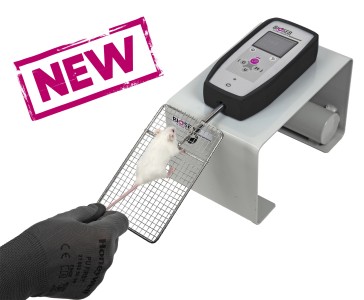Authors
M Guitart, J Lloreta, L Mañas-Garcia, E Barreiro
Lab
Department of Pulmonology, IMIM-Hospital del Mar, Barcelona, Spain.
Journal
Journal of Cellular Physiology
Abstract
Reduced muscle activity leads to muscle atrophy and function loss in patients and animal models. Satellite cells (SCs) are postnatal muscle stem cells that play a pivotal role in skeletal muscle regeneration following injury. The regenerative potential, satellite cell numbers, and markers during recovery following immobilization of the hindlimb for 7 days were explored. In mice exposed to 7 days of hindlimb immobilization, in those exposed to recovery (7 days, splint removal), and in contralateral control muscles, muscle precursor cells were isolated from all hindlimb muscles (fluorescence-activated cell sorting, FACS) and SCs, and muscle regeneration were identified using immunofluorescence (gastrocnemius and soleus) and electron microscopy (EM, gastrocnemius). Expression of ki67, pax7, myoD, and myogenin was quantified (RT-PCR) from SC FACS yields. Body and grip strength were determined. Following 7 day hindlimb immobilization, a decline in SCs (FACS, immunofluorescence) was observed together with an upregulation of SC activation markers and signs of muscle regeneration including fusion to existing myofibers (EM). Recovery following hindlimb immobilization was characterized by a program of muscle regeneration events. Hindlimb immobilization induced a decline in SCs together with an upregulation of markers of SC activation, suggesting that fusion to existing myofibers takes place during unloading. Muscle recovery induced a significant rise in muscle precursor cells and regeneration events along with reduced SC activation expression markers and a concomitant rise in terminal muscle differentiation expression. These are novel findings of potential applicability for the treatment of disuse muscle atrophy, which is commonly associated with severe chronic and acute conditions.
BIOSEB Instruments Used
Grip strength test (BIO-GS3)
Source :

 Douleur - Allodynie/Hyperalgésie Thermique
Douleur - Allodynie/Hyperalgésie Thermique Douleur - Spontanée - Déficit de Posture
Douleur - Spontanée - Déficit de Posture Douleur - Allodynie/Hyperalgésie Mécanique
Douleur - Allodynie/Hyperalgésie Mécanique Apprentissage/Mémoire - Attention - Addiction
Apprentissage/Mémoire - Attention - Addiction Physiologie & Recherche Respiratoire
Physiologie & Recherche Respiratoire




































 Douleur
Douleur Système Nerveux Central (SNC)
Système Nerveux Central (SNC)  Neurodégénérescence
Neurodégénérescence Système sensoriel
Système sensoriel Système moteur
Système moteur Troubles de l'humeur
Troubles de l'humeur Autres pathologies
Autres pathologies Système musculaire
Système musculaire Articulations
Articulations Métabolisme
Métabolisme Thématiques transversales
Thématiques transversales Congrès & Meetings
Congrès & Meetings 